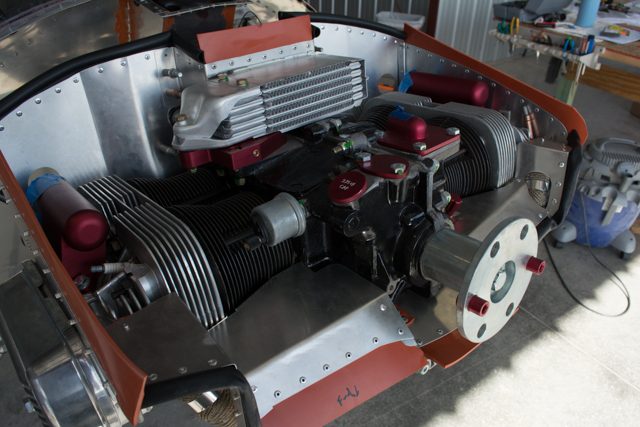Alternate Baffle Seal
All -
Like many others I've had a dickens of a time with the default rubber seal material supplied with the kit - it is *so* hard and unyielding that I cannot get the baffles trimmed to a good level that allow for sealing without requiring so much force that the fiberglass cowling distorts. The rigid leg of the "D" seems to really resist compression! I've re-trimmed my fence baffles 3 or 4 times trying to find the "sweet spot", but still can't get a good compromise of consistent sealing while allowing the cowling to sit (or be pulled down with fasteners) without major distortion.
Anyone have thoughts on this alternate seal available at McMaster-Carr Aerospace?
https://www.mcmaster.com/9141K117
This version of the "D" or "P" shaped baffle seal is much more pliable. If it was barely contacting the cowling on the inside then I'd be worried about it "blowing out" under pressure and allowing the air to leak past the top of the engine instead of being directed down through the cylinders; but if its compressed quite a bit (i.e. your baffle itself is within a quarter-inch of the cowling) then the thick foam compresses down strongly and seems like it'll hold.
The major downside is that this material is only rated up to 350 degrees F. On the one hand, that seems low compared to most engine compartment items. On the other hand, if something in contact with the fiberglass cowling is 350 degrees, the cowling itself will be melting already, right? CHT redline is 450, and realistically you probably don't want it above 380 or so for any length of time (per Mike Bush) and the baffle seals are several inches away from the heads... so they shouldn't get anywhere near that hot in normal ops, right?
Anyone have thoughts; or any actual measurements of under-cowling temps after shutdown (with the attendant heat-soak)?
--Noel
Like many others I've had a dickens of a time with the default rubber seal material supplied with the kit - it is *so* hard and unyielding that I cannot get the baffles trimmed to a good level that allow for sealing without requiring so much force that the fiberglass cowling distorts. The rigid leg of the "D" seems to really resist compression! I've re-trimmed my fence baffles 3 or 4 times trying to find the "sweet spot", but still can't get a good compromise of consistent sealing while allowing the cowling to sit (or be pulled down with fasteners) without major distortion.
Anyone have thoughts on this alternate seal available at McMaster-Carr Aerospace?
https://www.mcmaster.com/9141K117
This version of the "D" or "P" shaped baffle seal is much more pliable. If it was barely contacting the cowling on the inside then I'd be worried about it "blowing out" under pressure and allowing the air to leak past the top of the engine instead of being directed down through the cylinders; but if its compressed quite a bit (i.e. your baffle itself is within a quarter-inch of the cowling) then the thick foam compresses down strongly and seems like it'll hold.
The major downside is that this material is only rated up to 350 degrees F. On the one hand, that seems low compared to most engine compartment items. On the other hand, if something in contact with the fiberglass cowling is 350 degrees, the cowling itself will be melting already, right? CHT redline is 450, and realistically you probably don't want it above 380 or so for any length of time (per Mike Bush) and the baffle seals are several inches away from the heads... so they shouldn't get anywhere near that hot in normal ops, right?
Anyone have thoughts; or any actual measurements of under-cowling temps after shutdown (with the attendant heat-soak)?
--Noel
